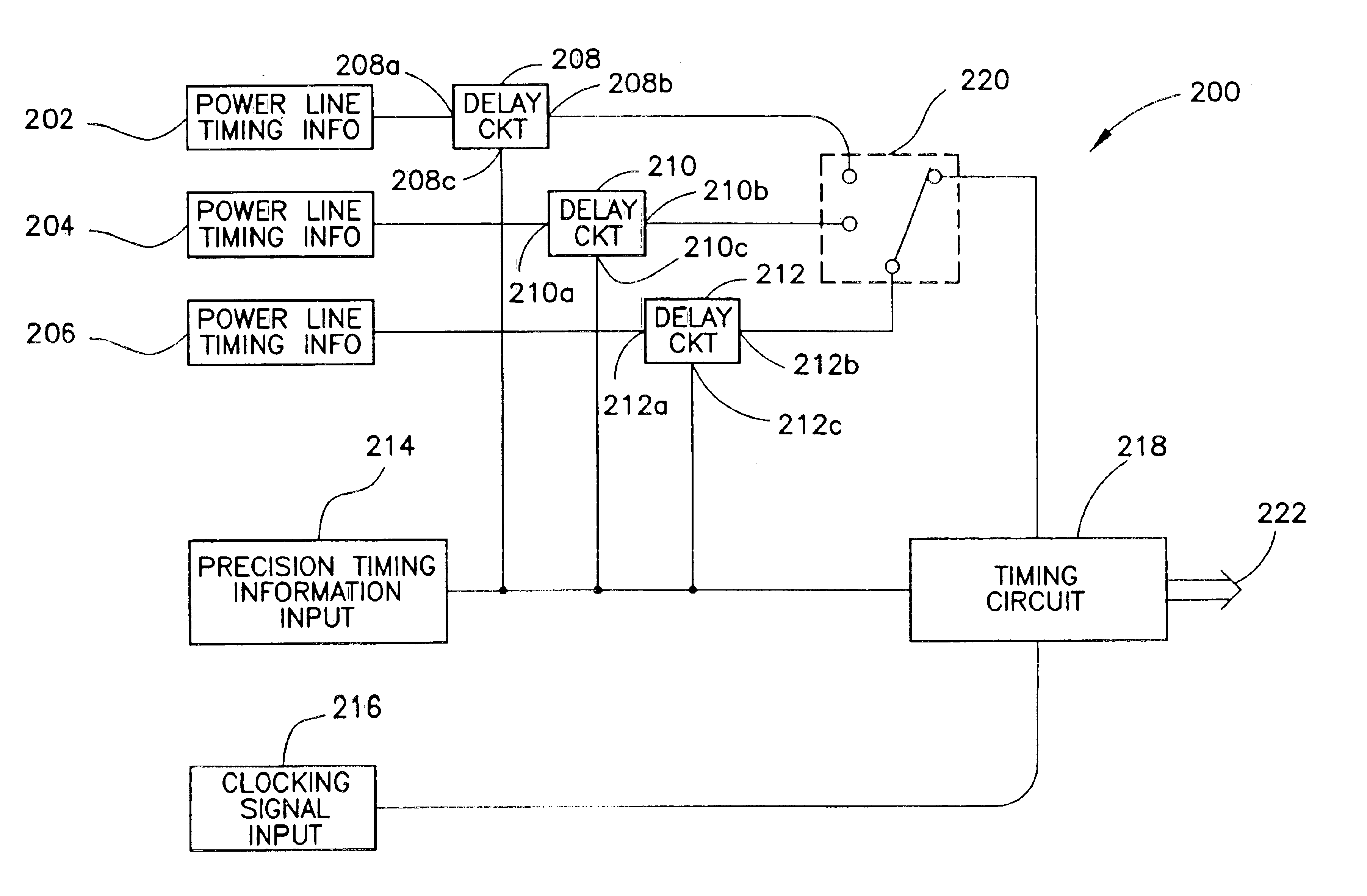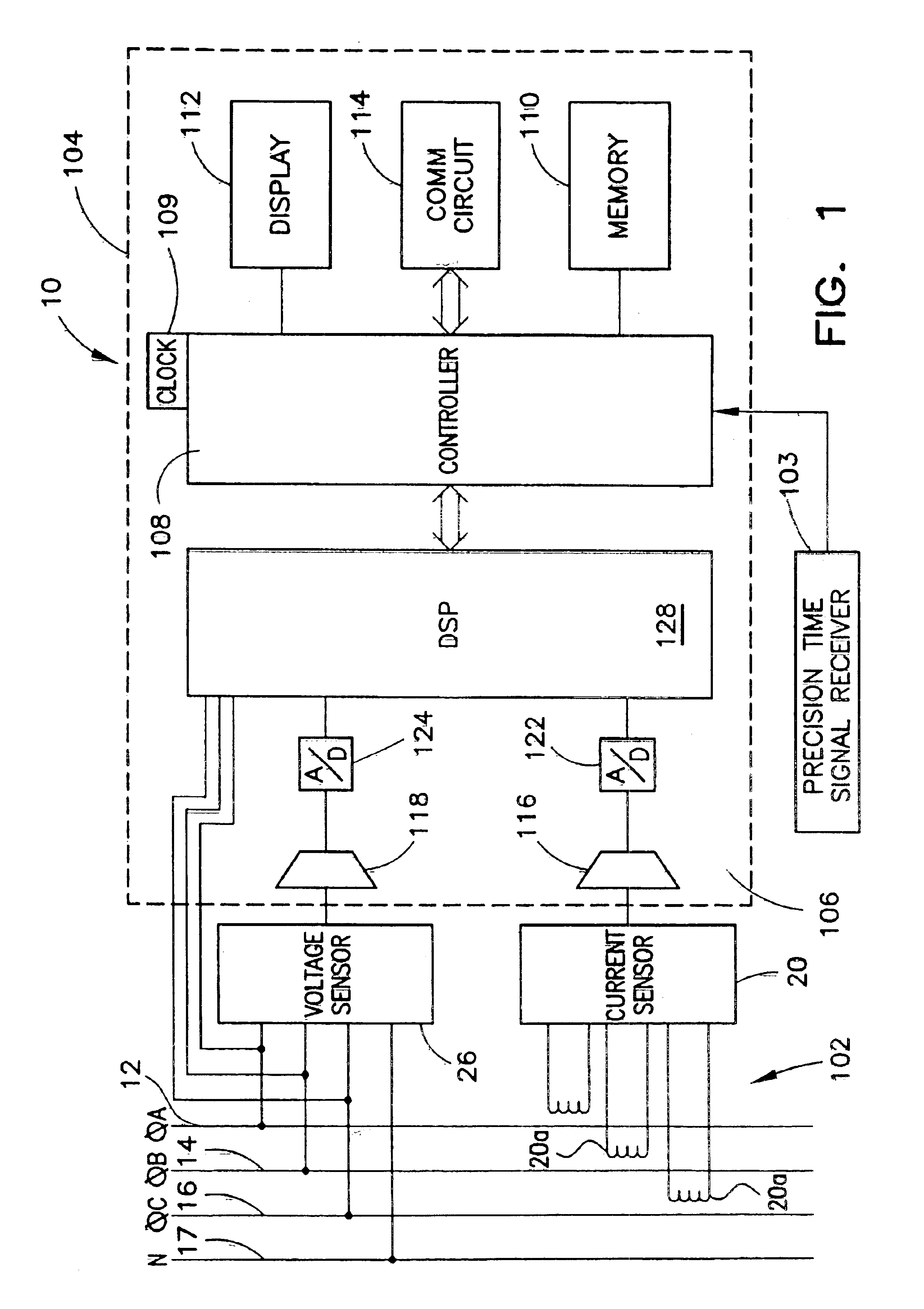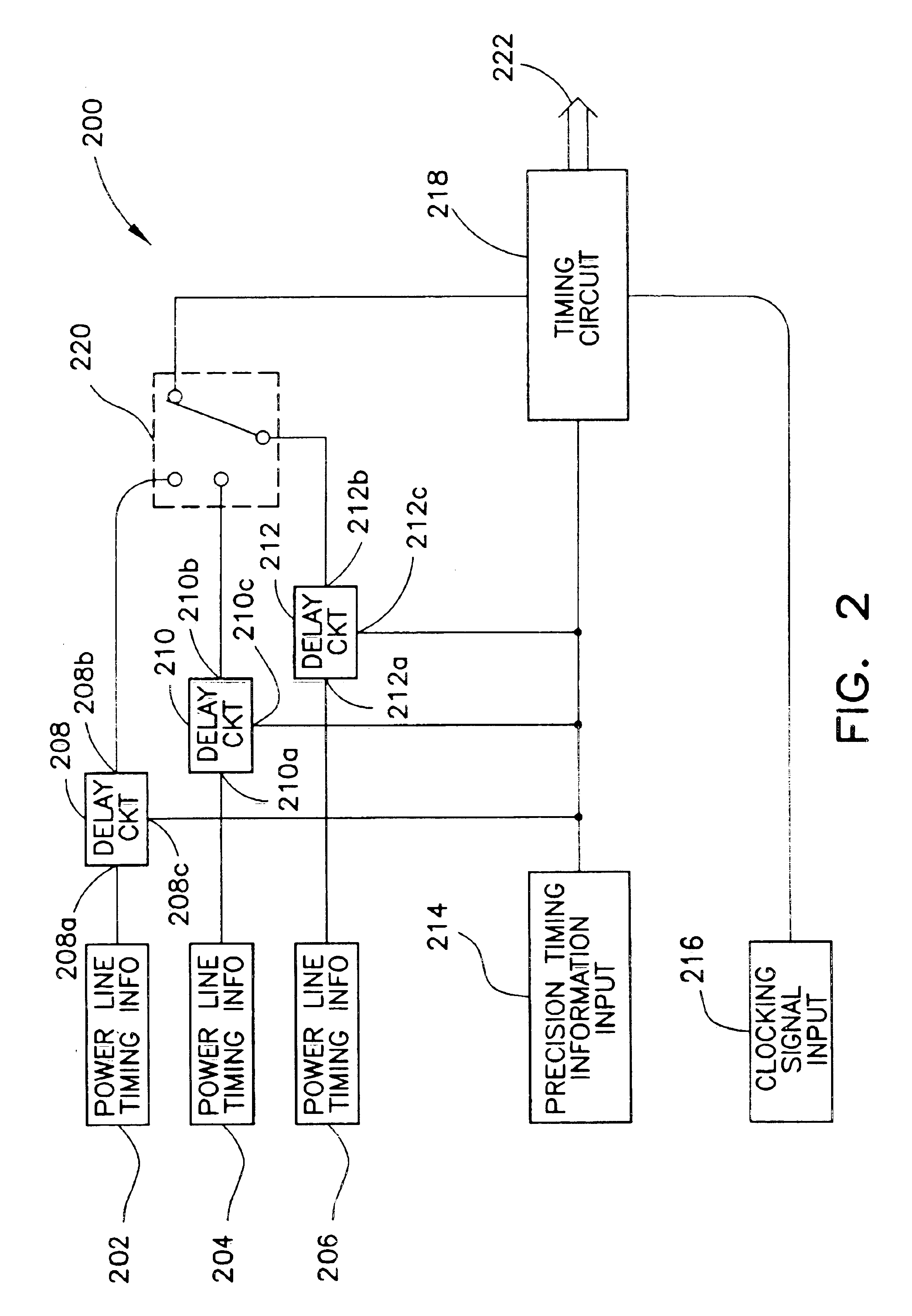Redundant precision time keeping for utility meters
a technology of utility meters and precision time keeping, applied in the field of utility meters, can solve the problems of degrading demand meter data, affecting the accuracy of meter data, and imposing significant labor costs on manual meter readings, and achieves the effect of smooth transition and accurate picture of certain behaviors
- Summary
- Abstract
- Description
- Claims
- Application Information
AI Technical Summary
Benefits of technology
Problems solved by technology
Method used
Image
Examples
Embodiment Construction
FIG. 1 shows a block diagram of an exemplary electricity meter 10 according to the present invention. The meter 10 is shown in FIG. 1 configured to measure power consumed over a three phase power system that includes power line A 12, power line B 14, and power line C 16. The three phase power system further includes a neutral line N 17. The three phase power system delivers power from a source, not shown, to a load not shown, through the power lines 12, 14, 16 and 17. It will be appreciated, however, that the present invention may be readily adapted to other types of electrical systems.
The electricity meter 10 essentially comprises sensor circuitry 102 and a measurement circuit 104. The sensor circuitry 102 includes a polyphase current sensor 20 and a polyphase voltage sensor 26. The measurement circuit 104 further comprises a conversion circuit 106, a controller 108, a memory 110, a display 112, and a communication circuit 114.
The current sensor 20 is connected to receive a signal ...
PUM
 Login to View More
Login to View More Abstract
Description
Claims
Application Information
 Login to View More
Login to View More - R&D
- Intellectual Property
- Life Sciences
- Materials
- Tech Scout
- Unparalleled Data Quality
- Higher Quality Content
- 60% Fewer Hallucinations
Browse by: Latest US Patents, China's latest patents, Technical Efficacy Thesaurus, Application Domain, Technology Topic, Popular Technical Reports.
© 2025 PatSnap. All rights reserved.Legal|Privacy policy|Modern Slavery Act Transparency Statement|Sitemap|About US| Contact US: help@patsnap.com



